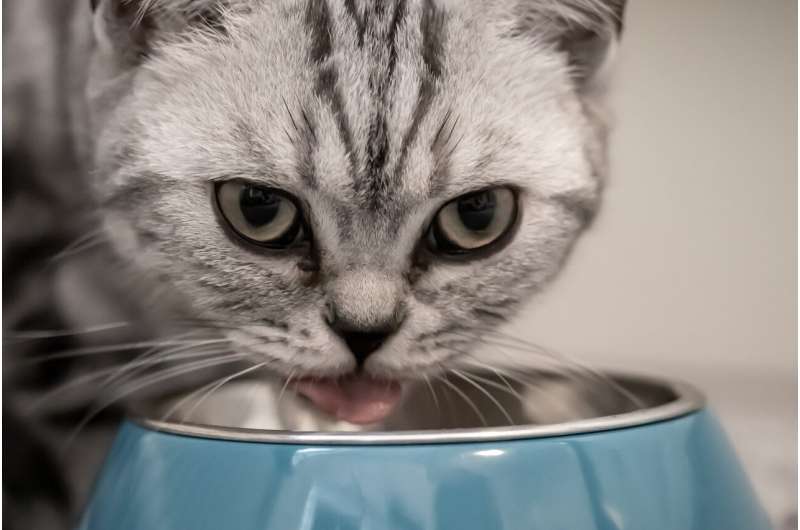This article has been reviewed according to Science X's editorial process and policies. Editors have highlighted the following attributes while ensuring the content's credibility:
fact-checked
peer-reviewed publication
trusted source
proofread
Improving cat food flavors with the help of feline taste-testers

Cats are notoriously picky eaters. But what if we could design their foods around flavors that they're scientifically proven to enjoy? Researchers publishing in ACS' Journal of Agricultural and Food Chemistry used a panel of feline taste-testers to identify favored flavor compounds in a series of chicken-liver-based sprays. The cats particularly enjoyed the sprays that contained more free amino acids, which gave their kibble more savory and fatty flavors.
Cats have a more acute sense of smell than humans, and the aroma of their food plays a big role in whether they'll eat or snub what their owner serves for dinner. Feline palates are also more sensitive to umami (savory) flavors than humans, and they can't taste sweetness. While meat-flavored food attractant sprays can help improve the scent and tastiness of dry kibble, the exact correlation between volatile flavor compounds and palatability is not well understood. Additionally, previous studies in this area lack input from a very important focus group: actual cats! So, Shiqing Song and colleagues relied on the expertise of a panel of 10 hungry adult cats to evaluate a series of food sprays containing different volatile flavor compounds.
To prepare their fragrant sprays, the researchers homogenized and heat-treated chicken livers. Then, they broke down proteins in the liver paste to various degrees using enzymes to produce four different food attractants. Song's team identified over 50 different flavor compounds across the sprays, ranging from tropical and floral to sweaty and rubbery. For the taste test, the researchers coated commercially available cat food with chicken fat and then sprayed it with one of the four chicken liver attractants. The samples were presented to the cats alongside a control food treated with a different, commercially available attractant. The team observed which bowl the cats chose first and how much food they ate throughout the day.
The researchers found that most cats preferred and ate more of the foods sprayed with their attractants, particularly the sprays with proteins that were further broken-down by the enzymes and contained more free amino acids. These compounds are important flavor precursors that can undergo the Maillard reaction, which likely produced many different aroma-enhancing compounds during the heat treatment step. The favored foods contained more mushroom and fatty flavors as well, while the less-enjoyed foods featured acidic- and sweet-tasting compounds, possibly because fewer Maillard reactions occurred. This work could help inform future cat food formulations and increase your chances of choosing a kibble your finicky feline might enjoy.
More information: Yuyan Wei et al, Generation of Olfactory Compounds in Cat Food Attractants: Chicken Liver-Derived Protein Hydrolysates and Their Contribution to Enhancing Palatability, Journal of Agricultural and Food Chemistry (2024). DOI: 10.1021/acs.jafc.4c02871
Journal information: Journal of Agricultural and Food Chemistry
Provided by American Chemical Society





















